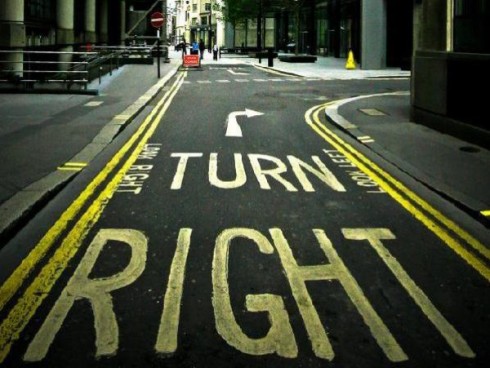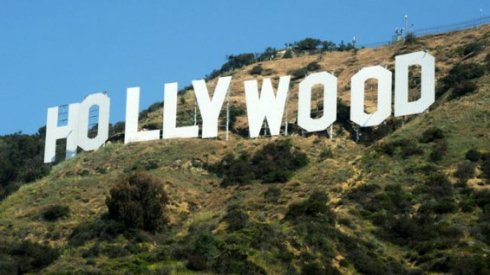You are currently browsing the category archive for the ‘Leadership’ category.

Efficiency is everything for United Parcel Service. Save time, space and money, and get there when promised.
What if it wasn’t just about getting the right package to the right place on time.
What if you could do it faster, save time, gas and money.
UPS has discovered one low-tech secret to getting deliveries there on time in an easier less stressful way. . Listen to driver Bert Johnson describe his route in Gardena, Calif.
“We’re gonna make a right turn onto 135th to Western. We’ll make another right on Western down to 139th,” Johnson says. And he goes on, “Right turn on 139th and go down to the end of the block and we’ll make another right turn.”
You getting the idea? UPS plots its delivery routes to make as many right turns as possible. In a world where half the driving choices are left turns, they avoid turning left.
And how much of the time are UPS trucks turning right? Tasha Hovland, an industrial engineering manager, said, “A guesstimate, I would probably say 90 percent. I mean we really, really we hate left turns at UPS.”
Right Turns Forever
Johnson sees the difference. “I do drive a lot fewer miles,” Johnson said. “I was driving 35 miles at first. Now I’m down to 30 miles a day.”
UPS trucks drove 2.5 billion miles last year, but the company says its package flow technology combined with right-turn routes saved 28,541,472 million miles, and three million gallons of fuel. And the company puts almost 92,000 trucks on the road every day. But without its efficiency and right-turn routes, it would need to send out an additional 1,100 trucks.
I guess they hate NASCAR drivers, right?
See if you can think of a low-tech way to save money today. Ask the people of the front line what they think, often it’s some of the best ideas.

So the whole premise of my blog is to show marketers and businesses owners the importance of using data and information to drive revenues, advertising initiatives and create opportunity.
Why? Because most small businesses don’t do it. And it can make a huge difference in determining success.
Want an example of what I mean?
I came across this story of Will Smith the other day. Yes, Will Smith the actor and singer. In 2009 he was Hollywood’s most bankable actor. He is the most successful actor of his generation. His movies have banked over $4 billion dollars at the box office.
When Will Smith made the decision to make movies, he explained to TV Show “60 Minutes” that he did so, by first studying what success looked like in the movie industry. And every marketer or business owner can take a page from his playbook.
“First, he gathered the right data — information that was current, accurate, relevant and sufficient to make his decision.
Second, he analyzed it for patterns or insights, and discovered that the top 10 movies included special effects; nine of 10 included special effects with creatures; and eight of 10 included special effects, creatures, and a love story. His first two movies, “Independence Day” and “Men in Black,” followed that model, and grossed $1.3 billion combined.
Third, he didn’t look to his competition for guidance. In the mid-1990s, when the biggest movie actors were Tom Cruise and Tom Hanks, Smith opted against making the same films they did. Instead, his strategy was to look at the top-grossing movies, and analyze what made them so — and most importantly, give the movie fans (the buyers of his product) what they wanted.”
Will Smith chose not to rely on his “gut feeling” for what might make a successful film. Rather, he looked at what the customer wanted and responded with a product to suit them.
The strategy is simple. It is powerful. And it got the results Smith wanted. This is a lesson that every business can learn. In a constantly changing business world, gut or past successes are less and less reliable for knowing what the market wants and will buy. Good decisions require homework and objective investigation.
If Will one day decides Will Smith is through with acting, he definitely could have an equally successful career in marketing and business.
According to Google there are 70 Million websites that are dedicated to or that mention the phrase “customers suck” – no surprise really.
The prevailing attitude of most businesses seems to be that consumers should bow down and thank them for what they do.
Customers don’t suck, businesses do.
Actually it’s their customer service that does.
Stop complaining about the customer and figure out what they want, how they want to be talked to, and why they even care about your stuff. Then go way overboard and give it to them. It doesn’t matter whether you’re a business, a church or working a lemonade stand. Consumers respect that you will care enough about them to treat them like royalty. And they will remember that, and tell all their friends and family.
In the old days advertisers could dictate the terms of the business to a customer, now with advent of the internet and the popularity of social media the tables have turned.
A friend of mine described it this way, “in the old days we shot deer. Nowadays the deer have guns, and they are shooting back.”
This little video sums it up nicely I think.
When’s the last time you did any research to truly understand your customer – I mean deeper than knowing their age and gender. It may be time for some relationship counseling.
Why not start with a thank you, and follow it up with some over the top service and extras that your customer was never expecting. But that will change the relationship quick, and I also bet you’ll see a big lift to your bottom line.
